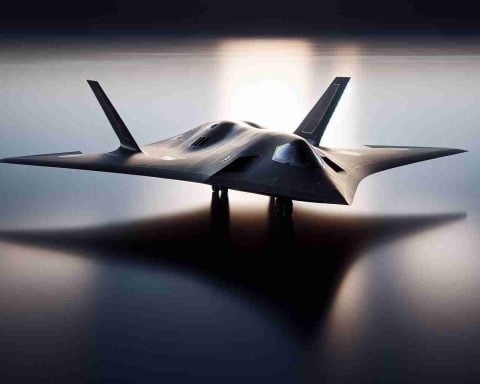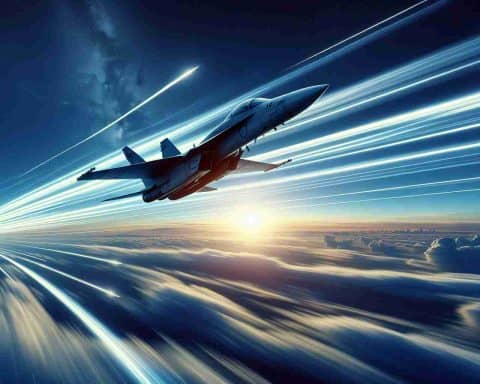In a show of strategic strength, the United States has reinforced its naval air power amid escalating tensions in the Western Pacific. The USS Carl Vinson, a key asset in the U.S. Navy’s fleet, has been equipped with six additional F-35C Lightning II stealth fighter jets. This move comes in the wake of extensive military exercises by China in contentious waters near Taiwan.
The additional F-35Cs, known for their stealth capabilities and advanced technology, belong to the Strike Fighter Squadron 147, based at Marine Corps Air Station Iwakuni in Japan. As part of the Carrier Air Wing Five, these jets significantly bolster the air combat readiness of the USS Carl Vinson as it sails through the Philippine Sea.
The deployment of these stealth fighters underscores the U.S. commitment to maintaining a forceful presence in the region. The F-35C’s long-range strike capabilities make it a formidable component in the U.S. defense strategy. This show of force serves as a deterrent amid rising tensions with China, which recently deployed 90 ships near Taiwan in a military drill.
China claims Taiwan as its own territory and has not ruled out using force to achieve reunification. In response, the U.S. continues to conduct operations in strategic sea lanes to ensure regional stability and safeguard the free movement of goods and ideas.
As geopolitical dynamics evolve, the Carl Vinson’s deployment, along with its enhanced aerial capabilities, symbolizes the U.S. resolve to uphold its interests in the Indo-Pacific region.
Unveiling the Strategic Edge of the U.S. Naval Air Power in the Pacific
The United States’ strategic move to enhance its naval air power in the Western Pacific region, specifically with the USS Carl Vinson, has sparked new conversations around defense strategies, technology, and geopolitical implications. As tensions simmer with China’s assertive military stance around Taiwan, understanding the nuances and broader implications becomes crucial.
Advanced Capabilities of the F-35C Lightning II
The addition of six F-35C Lightning II stealth fighter jets aboard the USS Carl Vinson marks a considerable elevation in combat readiness for the U.S. Navy. These jets are renowned for their capabilities, including advanced stealth technology, superior radar systems, and cutting-edge avionics designed for long-range missions. Such features enhance their effectiveness in electronic warfare and precision targeting.
Security and Geopolitical Implications
Deploying these advanced jets is not merely a matter of enhancing military hardware but signals a stronger U.S. resolve to counterbalance China’s growing maritime ambitions. The strategic reinforcement aims to deter potential conflicts, affirming the United States’ commitment to maintaining peace and stability in the Indo-Pacific. This move is particularly significant given China’s increasing military exercises and naval deployments in the region.
Trends in Military Technology
The inclusion of F-35Cs also highlights broader trends in military technology, emphasizing the importance of air superiority and technological advancements. The U.S. Navy’s focus on incorporating cutting-edge technology aligns with modern warfare’s evolving requirements, where stealth and precision are paramount.
Future Predictions and Strategic Developments
Looking ahead, experts predict further advancements in defense technology, potentially increasing the deployment of stealth fighters like the F-35C. This trend underscores a growing emphasis on air power as a strategic deterrent, particularly in regions experiencing rising geopolitical tensions.
Sustainability and Resource Management
Although the focus is often on the fighter jets’ capabilities, there is growing attention on the sustainability practices associated with their operation. Ensuring efficient resource management and minimizing environmental impacts will likely become integral aspects of future military deployments.
Market Analysis and Defense Spending
The incorporation of advanced fighter jets also reflects broader themes in defense spending and market dynamics. As countries invest more in these technologies, understanding the economic implications and strategic priorities will be essential for shaping future defense policies.
For more information on the broader defense initiatives and strategies, you may consider visiting the U.S. Navy’s official website.














